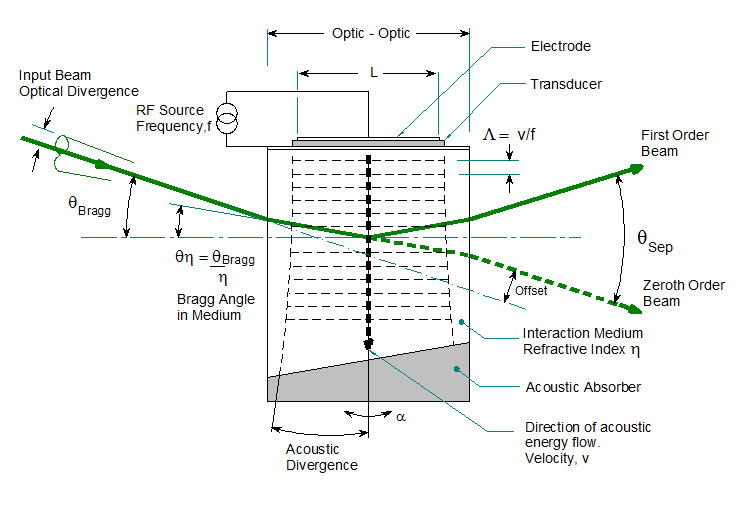Acousto-Optics
All AO devices feature a piezo-electric transducer bonded to one face of a crystal material. When an RF drive signal is applied to this transducer, a travelling acoustic wave is generated in the crystal. Due to the photo-elastic effect the acoustic column produces a periodic change in the refractive index, similar in effect to the slits of a diffraction grating. Practical AO devices are designed such that a high proportion of the incident laser light is diffracted into a single output order. This is operation in the Bragg regime.

Bragg diffraction requires a defined interaction length (L), and the laser light to be input at a specific angle. The Bragg and separation angles are a function of the optical wavelength, the RF drive frequency and the crystal acoustic velocity (V). Some AO crystal types require the input beam to be polarized.
The RF drive frequency determines the output angle of the diffracted beam and the RF power determines the beam intensity. These are the basic control mechanisms of AO modulators and deflectors.
